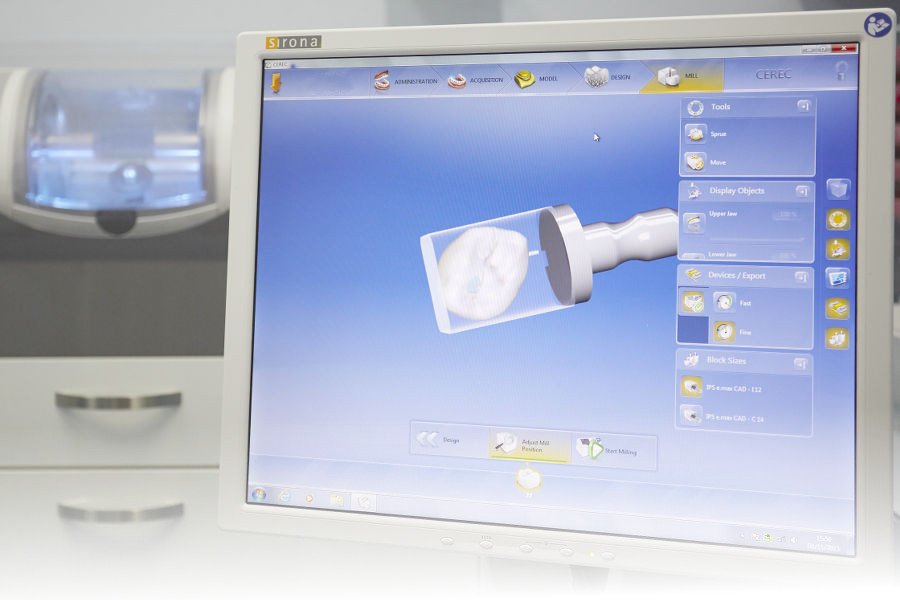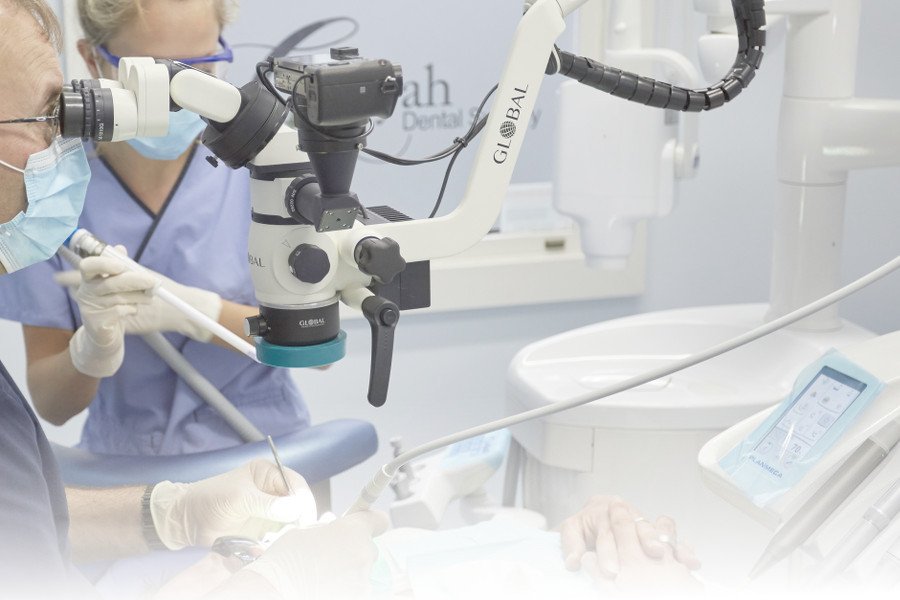Biomimetic and minimally invasive dentistry
Taking dentistry in a new direction
Tooth preservation and dental conservation lie at the heart of biomimetic and minimally-invasive dentistry. At Gunyah Dental we are dedicated to the health, function and appearance of oral tissue by preventing disease from occurring or intercepting disease progress with minimal tissue loss. Our dentists and therapists, using magnification and advanced technologies, remove the least amount of tooth structure, bone or soft tissue necessary to eliminate what is unhealthy or diseased. When tooth replacement is necessary, it is performed as conservatively, comfortably, and as beautifully as possible.

Biomimetic and Minimally invasive dentistry provide a new way to take care of your oral health.
Biomimetic Dentistry
Biomimetic dentistry is a minimally invasive way of treating teeth that have become weakened, fractured or decayed. The word biomimetic means to mimic nature, and this new and exciting type of dentistry recognises the need to imitate the properties of natural teeth as they are perfectly designed for the job in hand. Teeth move, bend and have physical dynamics of force that need to be allowed for when restoring a damaged tooth and recent advancements mean we can now rebuild teeth with materials that emulate these properties more closely.
Why is Biomimetic Dentistry so different?
The materials used in Biomimetic Dentistry flex with the tooth, reducing the likelihood of fractures. In contrast the materials used for crowns and many traditional fillings are hard and inflexible. The remaining tooth structure is often weakened by the forces created when biting and chewing, and this can lead to it cracking. A cracked tooth may require extraction, meaning both the crown and the tooth will be lost. Alternatively the biting forces can weaken the bond between the crown or filling and the natural tooth, allowing bacteria to penetrate the tooth, creating infection and decay.

The practice of biomimetic dentistry helps to conserve the teeth and to keep them as strong as possible by sealing out bacteria and protecting the nerve and inner part of the tooth. Traditional dentistry techniques have often meant decayed or damaged teeth are drilled and filled, are crowned, and invasive root canal therapy is eventually required. The restorations and materials used in more traditional dentistry often require the destruction of healthy tooth structure to allow for their placement meaning a substantial amount of the tooth is lost forever. In contrast biomimetic dentistry only replaces those areas of the teeth that are damaged, conserving the healthy parts of the tooth.
Biomimetics at The Gunyah
Fortunately, at Gunyah Dental, we are able to bond or glue teeth back together and replace missing parts of damaged teeth without removing any more precious tooth structure than is absolutely necessary. The use of advanced materials, adhesives and bonding techniques, together with CEREC CAD/CAM technology, enables us to seal teeth from bacterial infection and rebuild teeth to a natural strength and resilience with materials that simulate natural tooth substance. Such restorations respond to daily use with reduced stress and cracking.
Following the principles of Biomimetic Dentistry has drastically reduced our need to cut teeth down for crowns and achieving such good bacterial seals and well-fitting bonded restorations means that further repair work or root canal treatment are less likely in the future.
Minimally Invasive Dentistry
As with biomimetic dentistry, the goal of minimally invasive dentistry is to conserve healthy tooth structure. Using the advanced technology, techniques and materials we have at Gunyah Dental we are able to perform the least amount of dentistry needed whilst never removing any more of the tooth structure than is required to restore the tooth.
We use a number of techniques to ensure our dentistry is as minimally invasive as possible:
Remineralisation
Every day minerals are lost from and added to a tooth’s enamel layer through demineralization and remineralisation. When acids attack the enamel from plaque bacterial action, acidic foods and drinks or reflux, minerals are lost. Minerals can be redeposited to the enamel from saliva, fluoridated water, calcium containing foods and toothpaste but if too much demineralisaton and insufficient remineralisation is occurring the enamel can be destroyed. We can intervene to help remineralise the enamel layer if we feel demineralization is becoming a problem and threatening the health of the tooth. We can recommend fluoride treatments and the use of CCP (casein phosphopeptide) Remineralisation Agents. In many cases the demineralization/remineralisation imbalance can be redressed by healthy changes in your diet and we can offer advice.
Sealants
Usually made of plastic resin, dental sealants protect teeth from bacteria that cause decay. Sealants fit into the grooves and depressions of the tooth and act as a barrier, protecting against acid and plaque. Sealants do not require any cutting of the tooth and can be placed on teeth that might be susceptible for decay at any time.

CEREC Inlays and onlays
Dental inlays and onlays are used when teeth are decayed or broken or when old fillings need to be removed or replaced. A dental inlay is similar to a filling and fits inside the cusp tips (top edges) of the tooth. A dental onlay is more extensive and extends over the cusps of the treated tooth.
In certain cases CEREC inlays and onlays offer excellent alternatives to crowns and also offer a well-fitting, stronger, longer lasting reparative solution to tooth decay or similar damage than tooth coloured fillings. CEREC provides us with the materials, technology and techniques to repair many teeth to full strength without the need for the more destructive tooth removal required for traditional methods of tooth restoration. CEREC onlays and inlays can be made in one visit.
Bite splints
Many people grind their teeth at night. Grinding, or bruxism, may cause serious damage to the teeth, and may require you to need crowns. Grinding, which often begins in your teenage years or early 20s, can be detected and corrected before much damage has been done. We can create bite splints for you to wear at night or during stressful times when most teeth-grinding occurs.

Dental Implants
The success of modern implant prosthetics have allowed us to recommend an implant as a first option to patients with missing teeth. This option removes the need to cut down healthy enamel on the teeth adjacent to the missing tooth site thereby preserving healthy tooth structure which is our ultimate goal.






